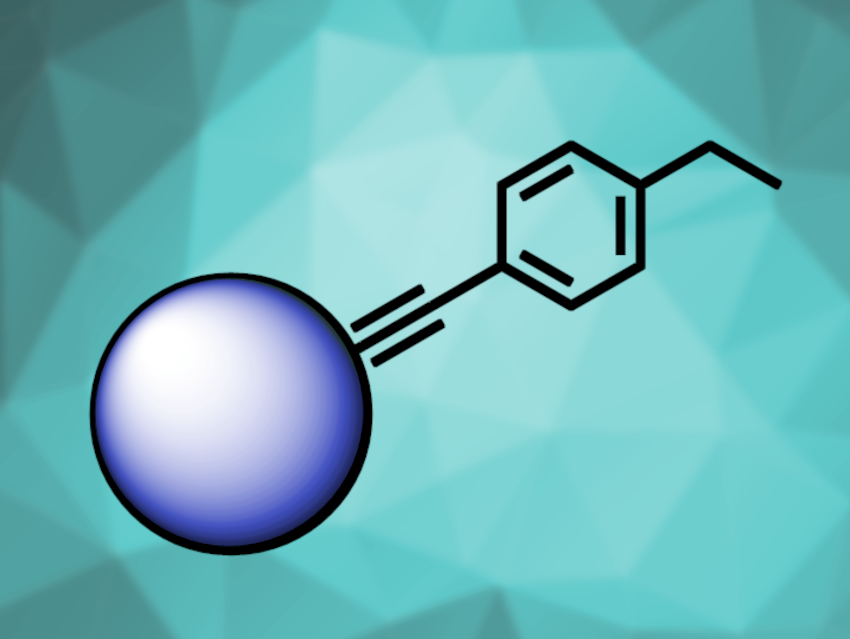Metal chalcogenide nanoparticles have possible applications, e.g., in photovoltaics or catalysis. They are usually prepared using solvothermal methods and stabilized using ligands such as thiols, amines, carboxylic acids, etc. These ligands are generally bound to the nanoparticles via non-covalent interactions, which limits direct electronic interactions between the nanoparticle cores and the ligands.
Shaowei Chen, University of California, Santa Cruz, USA, and colleagues have developed a method for the preparation of stable platinum chalcogenide (PtSx or PtSex) nanoparticles that are capped with acetylene derivatives for the first time. The team used 4-ethylphenylacetylene (EPA) as a ligand precursor, which was mixed with PtCl2(DMSO)2 in dimethyl sulfoxide (DMSO). Then a sodium chalcogenide was added, and the desired platinum chalcogenide nanoparticles were formed (simplified partial structure pictured). The nanoparticles have diameters of about 2 nm. The team also prepared nanoparticles capped with 4-ethylphenylthiol (EPT) for comparison.
In the alkyne-functionalized nanoparticles, Pt−C≡C bonds are formed at the interface. This allows for electronic interactions between the d electrons of the Pt atoms and the π electrons of the acetylene units. Using spectroscopic measurements and density functional theory (DFT) calculations, the team found differences in the optical and electronic properties of the alkyne-functionalized nanoparticles compared with the thiol-capped equivalents. The researchers propose that the method can be extended to other metal chalcogenide nanoparticles.
- Alkyne-Functionalized Platinum Chalcogenide (S, Se) Nanoparticles,
Qiming Liu, Xingjian Song, Davida DuBois, Bingzhe Yu, Amrinder Bhuller, Gabriel Flannery, Marcus Hawley, Frank Bridges, Shaowei Chen,
Inorg.Chem. 2024.
https://doi.org/10.1021/acs.inorgchem.3c03386




